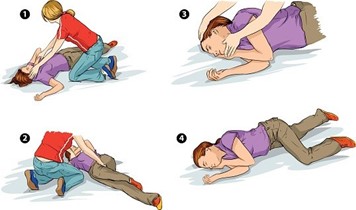A nurse is caring for a client who is experiencing a seizure. Which of the following actions should the nurse take?
Place the client in the prone position.
Place a towel under the client’s head.
Place a towel under the client’s head
Leave the client to get help.
The Correct Answer is B
When someone is having a seizure, it is important to protect their head from injury. One way to do this is by placing something soft and flat, like a folded jacket or towel, under their head1. It is also important to stay with the person until the seizure ends and they are fully awake, and to help them sit in a safe place after it ends1

Nursing Test Bank
Naxlex Comprehensive Predictor Exams
Related Questions
Correct Answer is A
Explanation
Acceptable identifiers for patients in healthcare include the patient’s full name, date of birth, medical record number, and telephone number12. These identifiers are used to reliably identify the individual as the person for whom the service or treatment is intended and to match the service or treatment to that individual.

Correct Answer is B
Explanation
When someone is having a seizure, it is important to protect their head from injury. One way to do this is by placing something soft and flat, like a folded jacket or towel, under their head1. It is also important to stay with the person until the seizure ends and they are fully awake, and to help them sit in a safe place after it ends1

Whether you are a student looking to ace your exams or a practicing nurse seeking to enhance your expertise , our nursing education contents will empower you with the confidence and competence to make a difference in the lives of patients and become a respected leader in the healthcare field.
Visit Naxlex, invest in your future and unlock endless possibilities with our unparalleled nursing education contents today
Report Wrong Answer on the Current Question
Do you disagree with the answer? If yes, what is your expected answer? Explain.
Kindly be descriptive with the issue you are facing.
